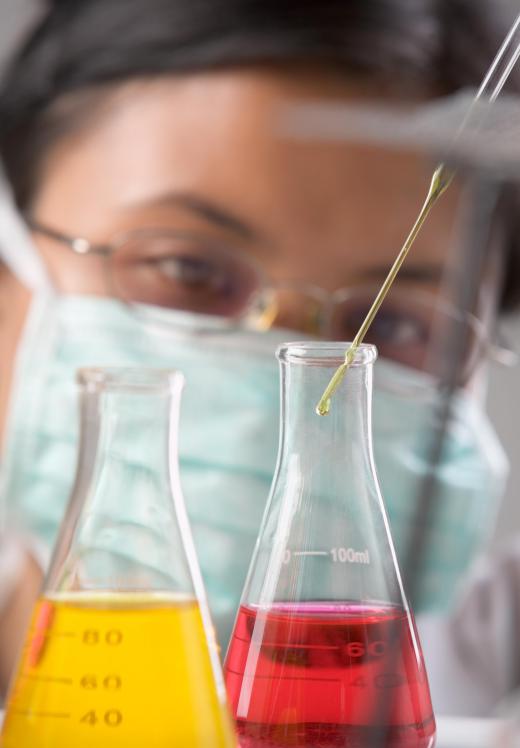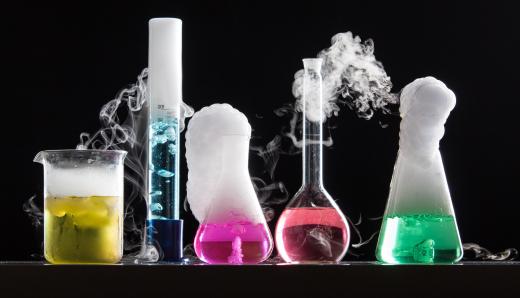What Is Qualitative Analytical Chemistry?
Quantitative analytical chemistry ascertains amounts of known substances in a sample. Such tests are run routinely for quality control, as for example the level of active ingredients in cold tablets. Qualitative analytical chemistry seeks to know, not how much but what is present — the identities of unknown substances. These determinations are not always routine, and can be quite complex. Physical and chemical characteristics are determined as quickly and inexpensively as possible, utilizing a combination of carefully chosen instrumental and wet-test methods.
Qualitative analytical chemistry is most conveniently divided into two types: organic analysis and inorganic analysis. Organic qualitative analytical chemistry is the more complex of the two. There are millions of possible organic compounds, thousands of which are known and have been characterized. A typical organic molecular structure may incorporate aliphatic chains or rings, aromatic rings, ether linkages, hetero-atoms, double and triple bonds plus alcohol, carbonyl and carboxyl functionalities. Instrumental methods of identification are essential and commonly include gas-liquid chromatography and electrophoresis, as well as infrared, ultraviolet and mass spectroscopy.

Organic qualitative analytical chemistry is one of the most interesting and important courses taught in universities. It requires composite knowledge of a host of chemical reaction types, as well as a general understanding of instrumentation and ability to read spectra, including nuclear magnetic resonance spectra. Knowledge of chemical stability is essential, since some tests can damage or destroy a sample or present a safety hazard. The course also demonstrates the student’s familiarity with important data sources, including the historically invaluable Beilstein library of organic compounds and their derivatives — comprising thousands of entries. Beilstein is still an important resource.

The pharmaceutical industry is vitally dependent upon a technique of qualitative organic analytical chemistry known as thin-layer chromatography (TLC). A plate, perhaps glass, has an even coat of adsorptive material. Tiny drops of sample material are placed at the top of a slanted plate and separation is accomplished via a descending solvent phase. This technique requires only trace quantities, and does not need elevated temperatures that can damage heat-sensitive substances. Compounds separate as they travel into distinct bands, from which each can be reclaimed and quantitatively measured, if desired.

Inorganic qualitative analytical chemistry applies to mostly to non-carbon chemistry including metal, metalloid, hydroxyl, carbonate and hydrogen ions. Testing can begin with a simple flame test or pH measurement, or a manual titration. Formerly the standard, wet-test methods have largely been replaced by modern instrumental methods, such as atomic absorption or atomic emission spectroscopy. Complex determinations may employ x-ray crystallography, scanning electron microscopy (SEM) and Fourier transform infrared spectroscopy (FTIR). Applications include environmental analysis and materials analysis.
AS FEATURED ON:
AS FEATURED ON:













Discuss this Article
Post your comments